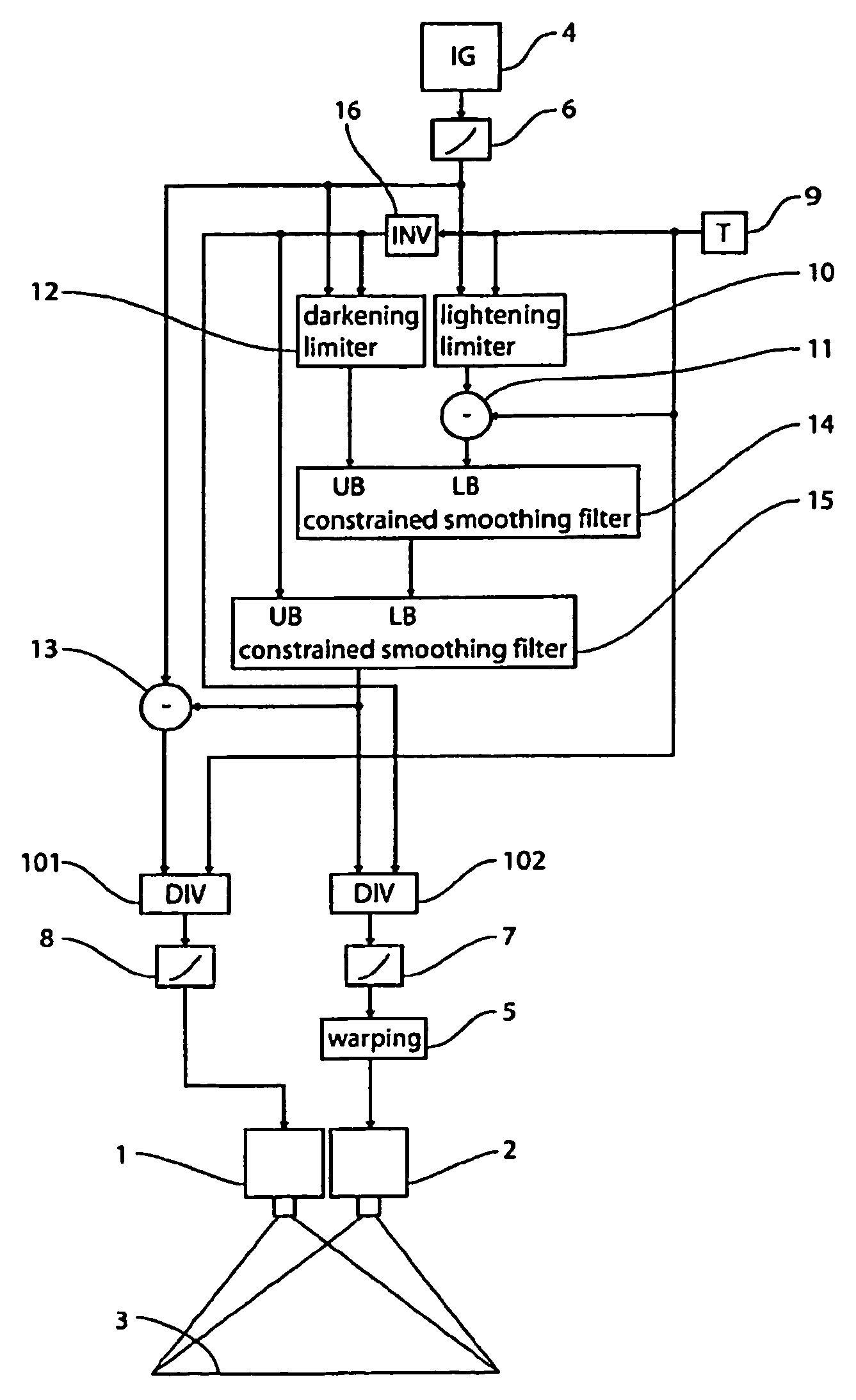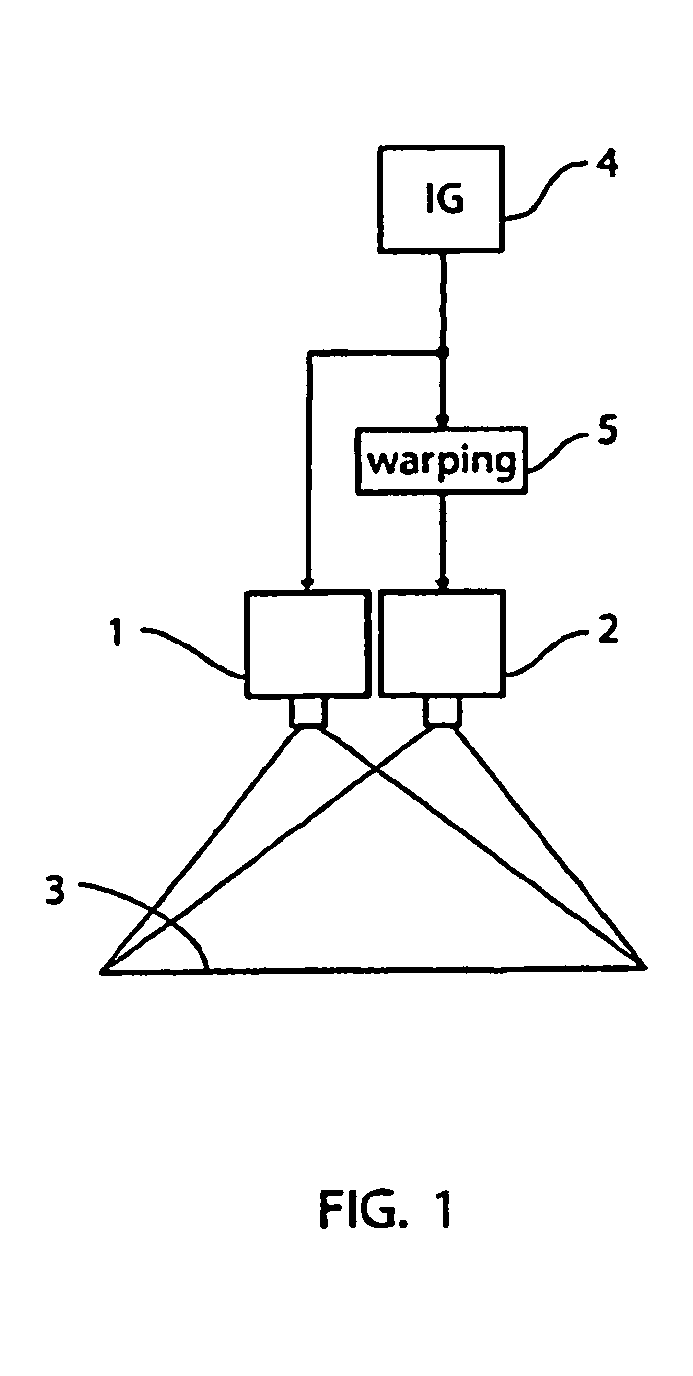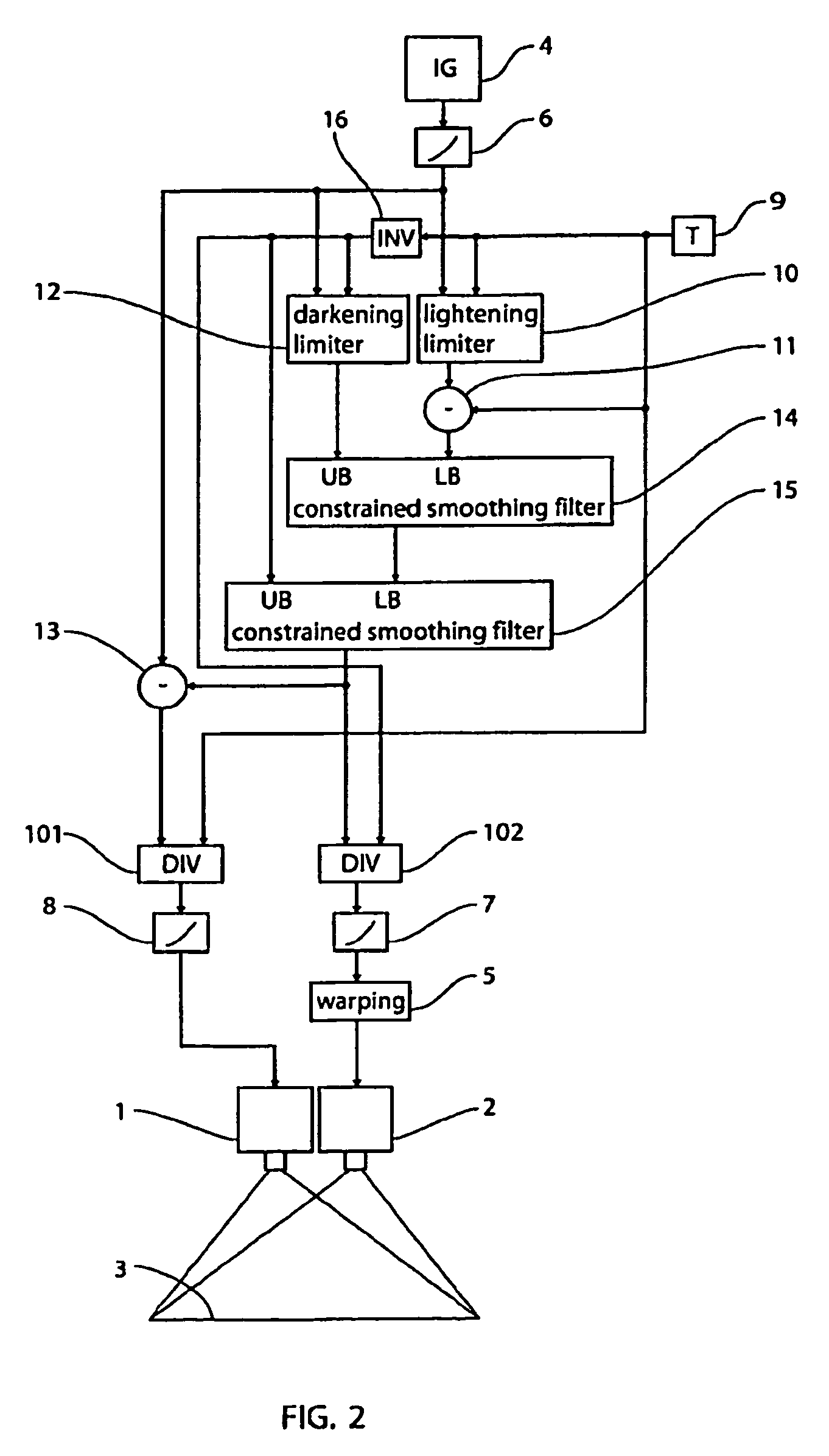Double stacked projection
a projection and double stacked technology, applied in the field of double stacked projection, can solve the problems of difficult alignment of double stacked projectors, lack of brightness, and difficulty in traditional double stacking at such high resolutions, and achieve the effect of high quality
- Summary
- Abstract
- Description
- Claims
- Application Information
AI Technical Summary
Benefits of technology
Problems solved by technology
Method used
Image
Examples
Embodiment Construction
[0086]The present invention is described below in terms of exemplary configurations but is not intended to be regarded as limited to those. For the sake of explanation, greyscale projection systems are used to describe the present invention, whereas the configurations described may as well be applied to each of the colour planes of a tri-stimulus (for example RGB) colour projection system, and, using standard colour space conversion techniques, further be used for projection systems using other colour spaces (for example YPbPr). Further, colour correction circuits for adapting for example hue adjustment, black points and white points etc. between source image signals and projectors may obviously be included. Still, image projection systems are used in several descriptions, whereas the described configurations may as well operate on a sequence of still images constituting a moving image. Monoscopic projection systems are used in the description, but the invention may as well apply to...
PUM
 Login to View More
Login to View More Abstract
Description
Claims
Application Information
 Login to View More
Login to View More - R&D
- Intellectual Property
- Life Sciences
- Materials
- Tech Scout
- Unparalleled Data Quality
- Higher Quality Content
- 60% Fewer Hallucinations
Browse by: Latest US Patents, China's latest patents, Technical Efficacy Thesaurus, Application Domain, Technology Topic, Popular Technical Reports.
© 2025 PatSnap. All rights reserved.Legal|Privacy policy|Modern Slavery Act Transparency Statement|Sitemap|About US| Contact US: help@patsnap.com



